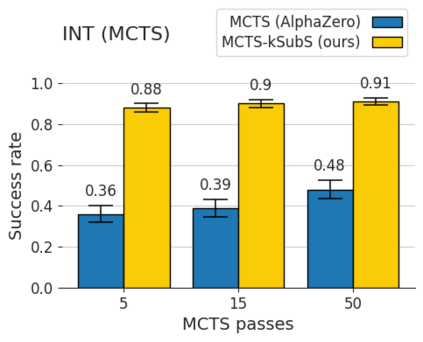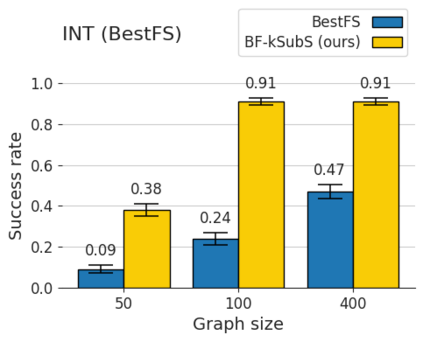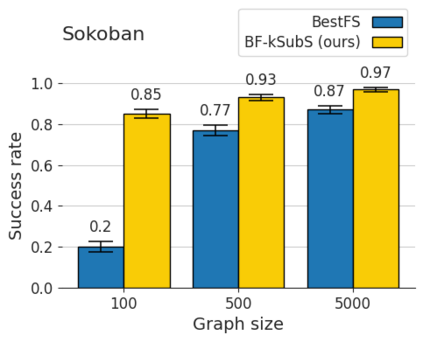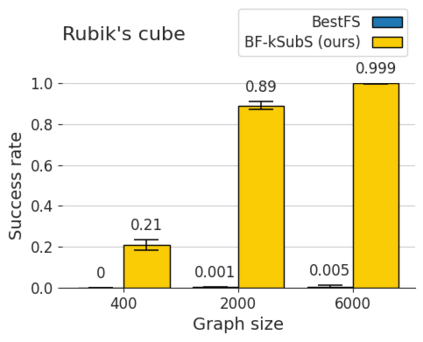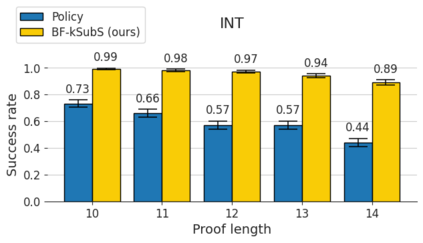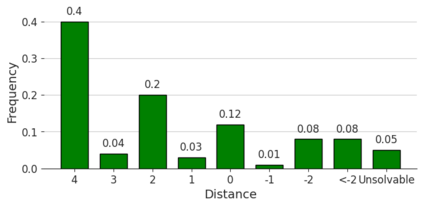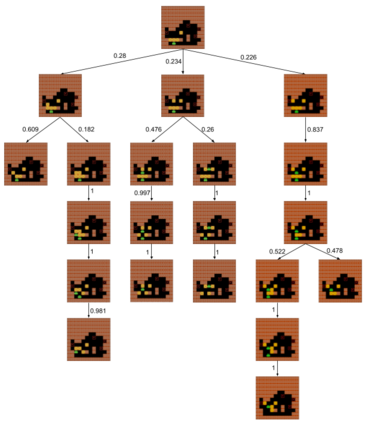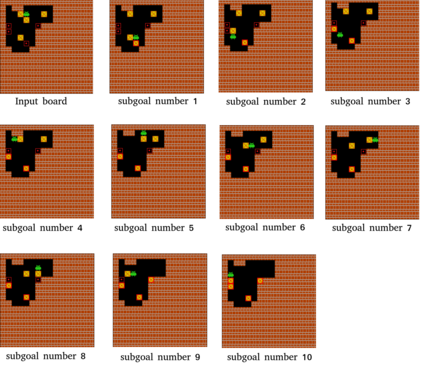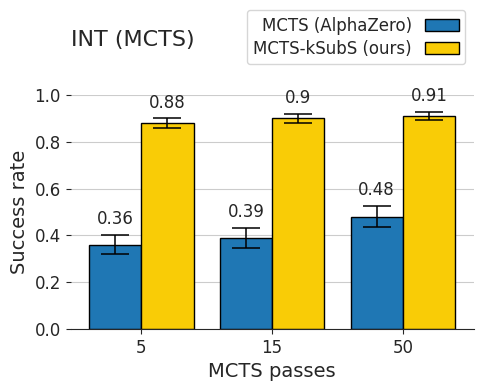Humans excel in solving complex reasoning tasks through a mental process of moving from one idea to a related one. Inspired by this, we propose Subgoal Search (kSubS) method. Its key component is a learned subgoal generator that produces a diversity of subgoals that are both achievable and closer to the solution. Using subgoals reduces the search space and induces a high-level search graph suitable for efficient planning. In this paper, we implement kSubS using a transformer-based subgoal module coupled with the classical best-first search framework. We show that a simple approach of generating $k$-th step ahead subgoals is surprisingly efficient on three challenging domains: two popular puzzle games, Sokoban and the Rubik's Cube, and an inequality proving benchmark INT. kSubS achieves strong results including state-of-the-art on INT within a modest computational budget.
翻译:人类通过从一个想法转向一个相关想法的心理过程,在解决复杂的推理任务方面表现卓越。我们为此提出子目标搜索(kSubS)方法。它的关键组成部分是一个有知识的子目标生成器,产生一系列既可实现又更接近解决方案的子目标。使用子目标可以减少搜索空间,并引出一个适合于有效规划的高水平搜索图。在本文件中,我们使用基于变压器的子目标模块以及传统的最先搜索框架来实施 kSubS。我们显示,在三个具有挑战性的领域,一个简单的方法,即两个流行的拼图游戏(Sokoban和Rubik的立方),以及一个不平等证明基准INT。KSubS在适度的计算预算范围内,取得了包括国际液流技术最新技术在内的重大成果。

